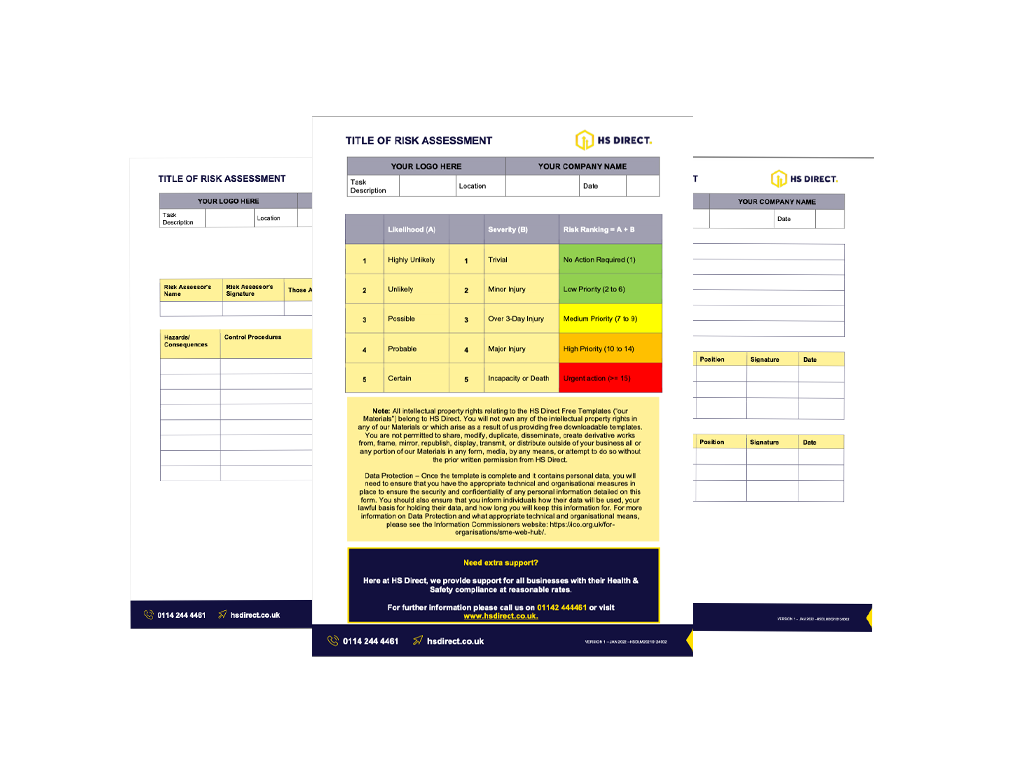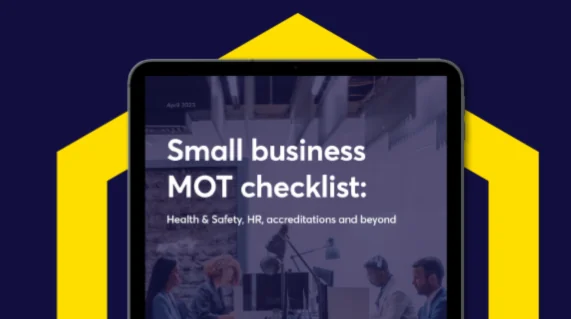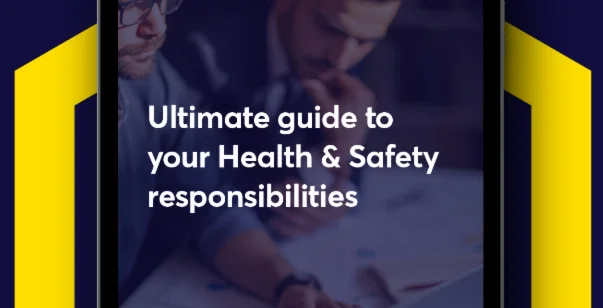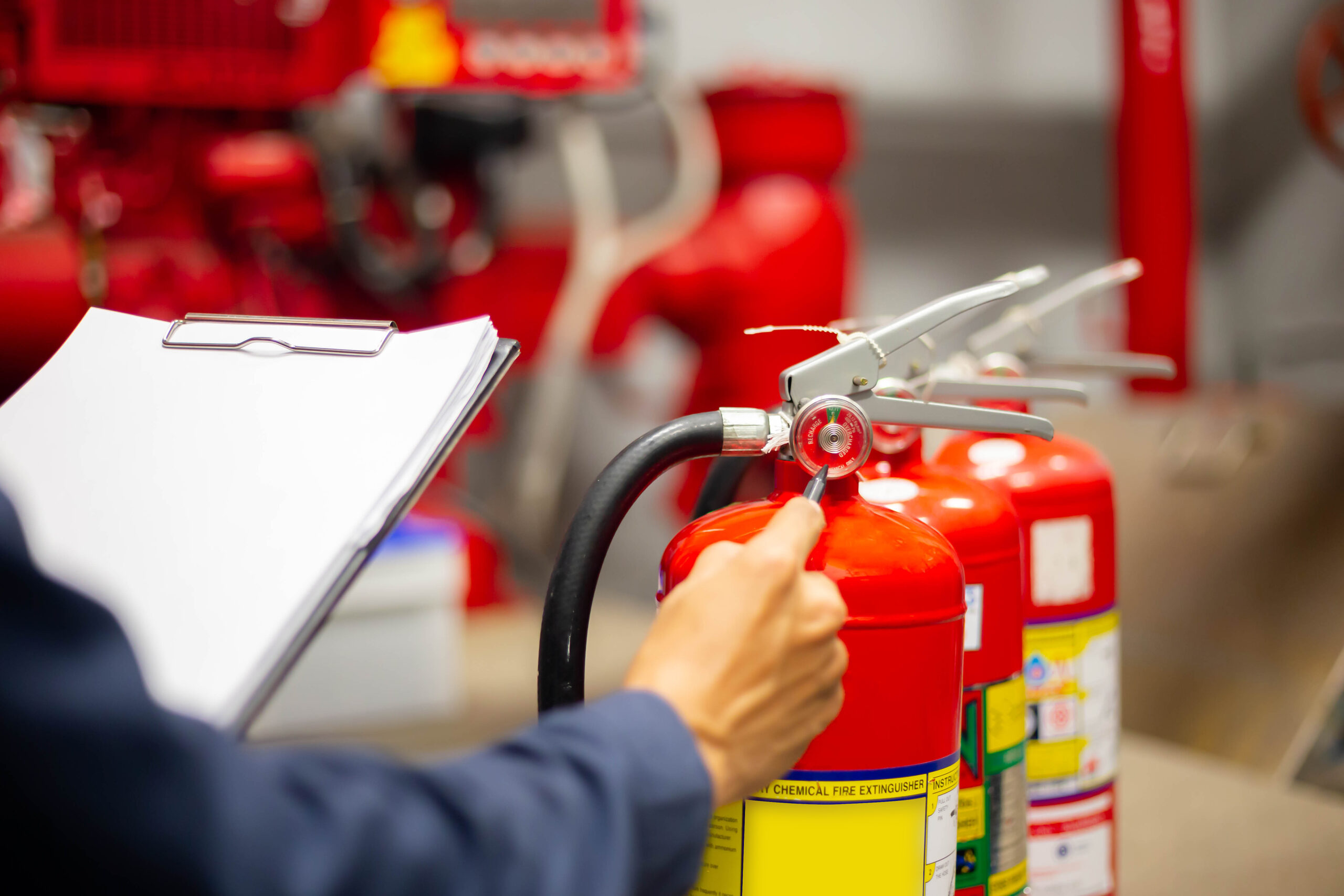A risk assessment is a process designed to highlight any hazards that exist or have the potential to occur within your workplace. Identifying any hazards or potential hazards means you can effectively manage the risk to your employees, any visitors and your business.
Putting the necessary controls and measures in place to help manage risks associated with any hazards is really important. If you’re aware of the hazards that might be contained within your workplace, it makes managing the risks much easier.
Considerations to make include:
- What is a risk assessment?
- Does my business need a risk assessment?
- Who is responsible for completing a risk assessment?
- What are the different types of risk assessment?
- How do I write a risk assessment?
Our risk assessment guide sets out all the important considerations you need to make as an employer. There are lots of different elements to a risk assessment, and we know it can be challenging to ensure all points are covered sufficiently. That’s why we’ve created this ultimate guide to help support you, so you can tackle your risk assessments with more confidence.
What are the 5 steps to risk assessment?
When beginning the process of creating your risk assessment, you should firstly consider the 5 steps to a risk assessment. These are:
- Identify the hazards
- Identify who is at risk
- Evaluate the risks
- Record your findings
- Review the findings of the risk assessment
It is your responsibility as a business owner to make sure your workplace is safe for employees, contractors, and members of the public.
Following these five risk assessment steps is the most efficient way to highlight potential risks in your work environment so you can put procedures in place to reduce them. They’re used to identify, monitor, and review the dangers in the workplace and are an important consideration for businesses in any industry.
Once you’ve planned a risk assessment and carried it out, you should document any changes required to prevent these potential hazards from causing harm and take the necessary remedial action. As well as a crucial practice for safeguarding, risk assessments also function as an opportunity to add further safety measures based on findings and outcomes.
What are the legal requirements for a risk assessment?
The Management of Health and Safety at Work Regulations 1999 state that you must ensure the following:
- an employer must take reasonable steps ‘for the effective planning, organisation, control, monitoring and review of preventive and protective measures’.
- assess risks to self, employees and any other person who has contact with a workplace or processes.
- review assessments over time and make any changes needed.
- in the case of an organisation with five or more employees, keep a record of risk assessment findings and identify people who are considered to be at risk.
The type of workplace setting of your business will determine if there are additional workplace Health & Safety laws that you need to consider.
Control of Substances Hazardous to Health (COSHH) Regulations
The Control of Substances Hazardous to Health (COSHH Regulations is a law that requires employers to protect employees or visitors from any hazardous substances in the workplace. As is the case with most workplaces, there are hazards and risks associated with the extensive range of harmful substances that need to be considered.
When conducting a risk assessment for COSHH, you’ll need to implement the 5-step risk assessment process and consider questions such as:
- How workers and employees may be exposed to a substance?
- Who else may be exposed?
- What control measures are in place?
- Is there further action needed to mitigate risk?
- Can you minimise the usage of a substance or change the way in which it is used?
- Can a substance be eliminated from the workplace?
Display Screen Equipment (DSE) Regulations
DSE regulations are all to do with the health risks of working with display screen equipment, such as PCs, laptops and tablets. If employees work in front of screens for a continuous period of more than one hour daily, then they are classed as ‘DSE users’. As an employer of any DSE users, you’ll need to carry out a DSE workstation assessment, which looks at the following points:
- Inspection of the workstation, what is the condition of the equipment being used?
- What job is being performed?
- Individual circumstances of each employee. Are there any additional requirements needed to aid posture or assist somebody with a disability?
- Has there been any changes to the way a station is set up?
- Are there any instances of complaints from employees experiencing pain or discomfort? What can be changed to prevent this?
Your DSE risk assessment will be used as a foundation to highlight all the areas for consideration and to make the appropriate changes where needed.
The Control of Vibration at Work Regulations
This piece of legislation aims to protect employees from being exposed to unsafe vibrations in the workplace. As a responsible employer, your risk assessment is a big part of keeping employees and workers safe. Not sure what to focus on? Here are some things to think about:
- Identify where the risk of vibration is and who will be affected.
- Speak to employees and highlight any processes, jobs or tools that are particularly a risk.
- Contain an estimate of the vibration exposure levels of employees.
- What vibration control measures are required? Where and how will they be implemented?
- Obtain information on the equipment from handbooks and instruction manuals. (e.g. make, model, information on vibration risks).
Who is responsible for risk assessments?
The duty lies with the employer to make sure that any risk assessment is carried out properly. This doesn’t mean that you need to carry out the process yourself, but it’s your responsibility to make sure the process is completed properly.
Before beginning the process, you should assess the following:
- Scope of the assessment
- What resources are needed?
- Who is involved? Stakeholders and any other managers?
Outline all the processes, activities and functions that need to be incorporated into your risk assessment. The bigger the workplace setting, the more detailed this may be.
You can then think about the amount of resources you’ll need. How much time will it take? Are there any budget limitations or extra requirements you’ll need to ensure it works?
You’ll need a good, organised risk assessment team to take on all the roles and responsibilities needed to maximise the effectiveness of the risk assessment.
It’s always good practice to incorporate as many employees as possible in the process, as they are the ones who can highlight risks efficiently. Once risk assessments have been completed, the findings and procedures then need to be clearly communicated to all relevant people across the business.
When should a risk assessment be carried out?
The Health and Safety Executive (HSE) encourages businesses to regularly review their risk assessments and reassess potential risks in the workplace to make sure that no further risks have cropped up, and no new control measures are needed. The HSE recommends that businesses carry out a risk assessment at least once a year.
However, they also say that you should do a risk assessment every time you bring in new procedures, equipment, or substances into the workplace as they may create new hazards. It could also be worth carrying out a risk assessment if there’s high staff turnover to check that all existing employees are aware of the Health & Safety measures you have in place, and if there have been any concerning changes such as a rise in absences relating to a problem in the workplace.
How often should risk assessments be reviewed?
We understand that your business may change as it grows. Therefore, your risk assessment will need to evolve with your business to reflect any changes.
These changes could include:
- A change in the number of staff you employ
- Changes in the equipment or procedures
- If you have had accidents or near misses
- Changes to your workforce (high staff turnover)
How to write a risk assessment
So, now you’ve got all the information you need about preparing for your risk assessment, it’s time to write it! Use the 5-step risk assessment process when writing your assessment and make the following considerations.
Identify the hazards
Identify all hazards that your employees and your business face. Consult your employees to get the best picture of what will impact them directly. There may be some areas you haven’t thought of that they are aware of. Take a look around your workplace and observe processes and activities that could be of danger to your organisation.
- Biological hazards – diseases, illnesses or viruses.
- Workplace accidents – factor in any slips and trip hazards, mechanical breakdowns, or equipment failure that could be of harm to employees.
- Technological hazards – what are the implications of a power outage or loss of internet connection?
- Chemical hazards – this is where your COSHH assessment will come in handy. What hazardous substances or cleaning fluids need to be considered?
- Mental health hazards – do you have processes in place to help your employees manage their mental health properly?
We recommend looking at your accidents and incident reports. You’ll be able to gauge the types of hazards that have caused issues in the past, and using these you can make the necessary adjustments so that your workplace and employees are safely protected.
Identify who is at risk
Now you’ve listed all the hazards, you need to think about those that will be affected. When writing your risk assessment, list all the affected persons for each hazard identified – that way you’ll make your employees feel safe and valued.
Each hazard should be defined by the severity of the risk it poses. Using a diagram or chart to illustrate is the best way to highlight the level of risk posed. Your risk matrix can be used to determine a score that categorises the hazard as very low risk to very high risk. You should also consider the type of injury associated with each hazard and the likelihood that this will happen.
Evaluate the risks
Now you know the hazards and the level of risk they pose, it’s time to evaluate each risk. The risk matrix you have carried out will help with your evaluations. Depending on the score of each hazard, you’ll need to implement safety measures to combat any adverse effects and reduce the level of risk.
Consider the risks
So, now you’ve collated all the information, you need to record your findings. You’re legally required to write down your risk assessment process if you have five or more employees in your workplace, but we recommend doing this anyway for best practice. Here are a few points to focus on when writing up your risk assessment:
- What hazards have you found?
- Who is affected?
- What control measures will you implement?
- Report on how your risk assessment was carried out
- Who was involved in the process?
- Have you assigned roles and responsibilities, and if so, what are they?
Review your findings
When any changes are made, it’s important to review the findings of the initial risk assessment and implement any new changes or tweak existing safety measures to reflect those changes. This should be recorded in your written report and updated when applicable.
What are the different types of risk assessment?
Risk assessments are never the same. Though there are a select few types, each one will incorporate different elements relevant to your business needs. Risk assessments can be formatted in several different ways to best outline the dangers your business faces. Here are the five different types of risk assessments:
- Qualitative risk assessments – these are the most common type of risk assessments, where an assessor will walk around a site and highlight any dangers.
- Quantitative risk assessments – using quantitative rules to highlight levels of risk, a matrix may be used to assign likelihood and severity.
- Generic risk assessments – often follow a template and are structured around risks involved in a specific task or job.
- Site-specific risk assessment – these are used for specific locations or tasks.
- Dynamic risk assessment – these are carried out following a sudden change or unforeseen circumstances.
Should I use a dynamic risk assessment?
Dynamic risk assessments are often used for jobs that are ever-changing. Dynamic risk assessments allow you to make changes and account for risk in a live environment that a standard risk assessment wouldn’t be able to cover. Standard risk assessments will always have a place and are required by law, but if your job involves changes in location or even the type of work being carried out, then you should consider a dynamic risk assessment.
An example of where a dynamic risk assessment might be used could include entering a new house. A dynamic risk assessment could be conducted to assess whether the property is safe to enter, whether the people in the property are showing threatening behaviour and whether there are relevant safeguards in place should there be an incident. That way, you’ll keep employees safe when conducting external visits, if their job role requires this.
Risk assessment templates

So, now you know everything there is about risk assessments, it’s time to talk about how we can help you. Our extensive range of risk assessment templates covers just about every industry and sector possible!
A templated risk assessment offers structure and clarity, outlining exactly what you need to record. They’re a useful tool for you to easily manage risks safely and appropriately throughout your workplace.
We have a whole library of risk assessment templates that you can download and complete to suit your business. They’re the ideal way to keep your business compliant and safe, so you can focus on getting the job done. Check out our most popular risk assessment templates below.
Electrical risk assessment template
We also have a free risk assessment template you can download, giving you a taster of what to expect. Click here to download.
If you want to get in touch to discuss anything risk assessment related, then we’re here for you. Please feel free to contact us and we’ll be on hand to assist you with any advice or queries.








